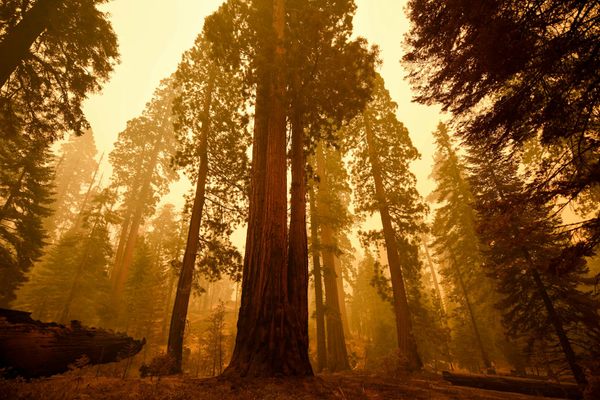One of New Zealand’s Most Majestic Trees Is in Danger
Tāne Mahuta is one of the oldest kauri trees in the world.

No one knows exactly how old Tāne Mahuta is. Perhaps 1,250 years. Perhaps 2,500. Living in the Waipoua Forest in New Zealand’s North Auckland Peninsula, the kauri tree reaches more than 160 feet tall and has grown more then 45 feet wide. Named for a Māori god, the son of the sky god Ranginui, Tāne Mahuta is one of the most beloved and revered trees of its kind.
But it’s surrounded with danger. About 200 feet from its base, the soil is tainted with a pathogen that kills kauri trees, and one expert is warning that Tāne Mahuta could already be infected.
Discovered a decade ago, the pathogen responsible for kauri dieback is a type of water mold, a relative of the microbes that caused the Great Potato Famine of Ireland. It lives in the soil, finding its way toward tree roots, where it attacks the tissues at the base of the trunk, killing the tree. It’s been spreading across New Zealand since at least the 1950s and is thought to have killed thousands of trees. There’s no known cure; the only way to protect trees is to keep it from spreading.
That’s difficult, though. The pathogen spreads through the forest on the feet of wild boars and other wide-ranging creatures, including humans. It can survive for at least six years on the sole of a shoe. In areas endangered by kauri dieback, park managers have added boardwalks and places to clean boots, The Guardian reports. But more dramatic measures are needed in some places. That might mean closing trails to the public or cutting down trees that already carry the pathogen.
None of this is simple. One forest manager told RadioNZ that even when trails are clocked people park nearby and find a way to go see trees like Tāne Mahuta.
Amanda Black, the scientist who called attention to Tāne Mahuta’s plight, has been critical of the government’s response to the threat of kauri dieback. Recently, kauri was reclassified as a threatened species for the first time. Tāne Mahuta’s roots extend well beyond 200 feet from its base, so it’s already in danger of being infected with the pathogen.
These towering trees have an imposing presence: In the novel Barkskins, Annie Proulx describes their “their great grey trunks like monster elephant legs… the bunched limbs at the tops of the sheer and monstrous stems.” They can seem like they have a life of their own. In decades past, forests of kauri have fallen to logging, but the species toughed out that threat. A tiny pathogen, though, could be the kauri’s downfall.














Follow us on Twitter to get the latest on the world's hidden wonders.
Like us on Facebook to get the latest on the world's hidden wonders.
Follow us on Twitter Like us on Facebook